This McInturff Sounds Like a Telecaster From Your Favorite Classic Rock Album
With electronics inspired by a famed 1970s studio console, Terry C. McInturff’s Spellcaster is tonal magic
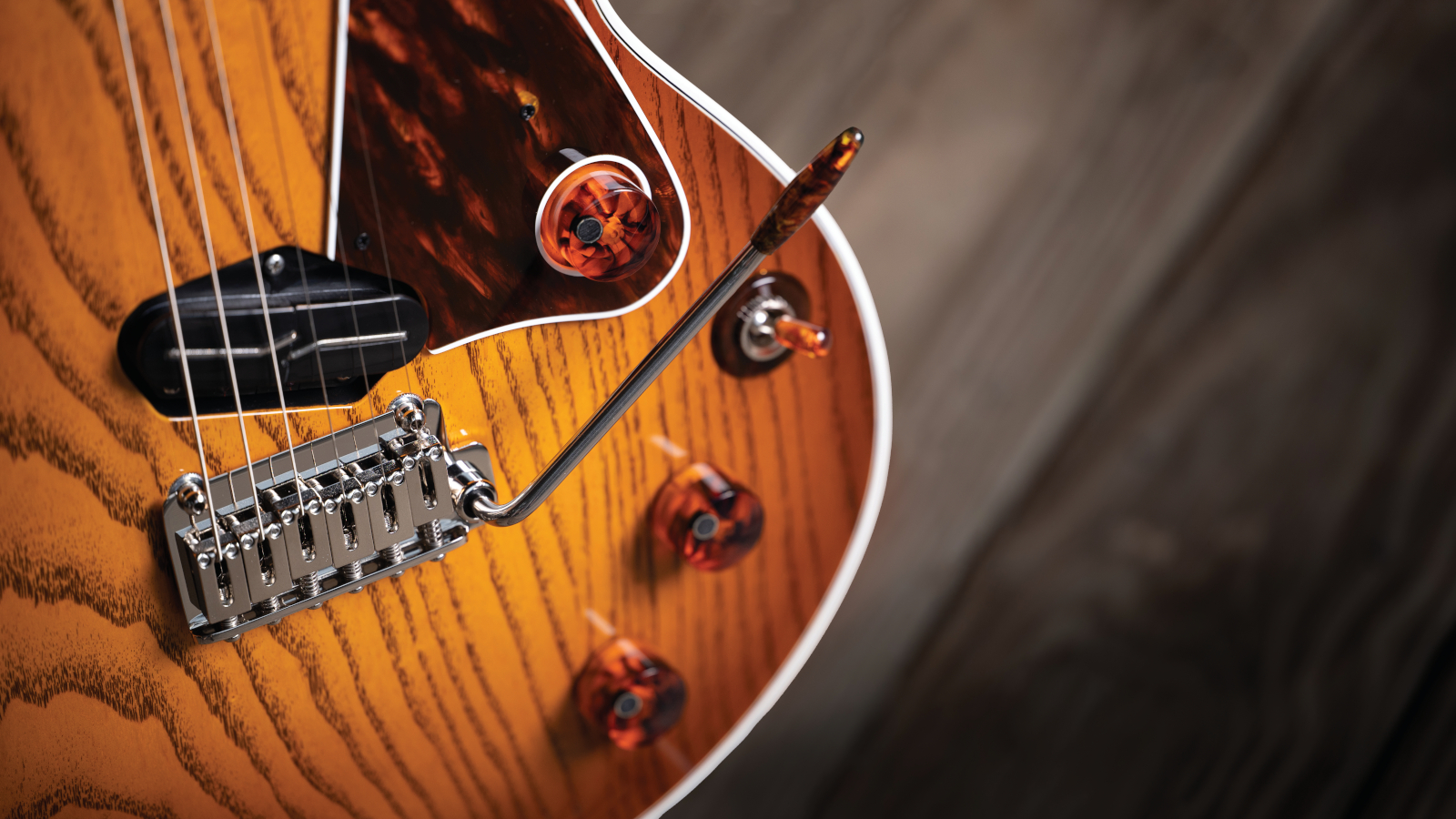
Considering that he has been working with guitars since 1978, it’s no surprise Terry C. McInturff knows how to build a good one.
Most newcomers to his work, however, are surprised by just how good his creations are, and by the fact that this eminently skilled luthier isn’t a household name.
McInturff’s Spellcaster wraps the builder’s broad-reaching craftsmanship and innovation into a mightily versatile instrument that pays homage to the seminal solidbody electric guitar, while it launches the platform into the next dimension.
McInturff’s Spellcaster wraps the builder’s broad-reaching craftsmanship and innovation into a mightily versatile instrument
McInturff grew up in the Chicago suburbs and got hooked on guitar from the AM rock and roll radio of his youth.
Though he’s a talented player (and remains a gigging guitarist to this day), he was drawn to guitar making, and McInturff solidified his abilities by attending the famed Roberto-Venn School of Luthiery in Phoenix, an institution he discovered in the back pages of Guitar Player magazine.
From independent building and restoration, he went on to work at a shop that subcontracted Ken Smith basses, then took a stint building in the Hamer Custom Shop before moving to North Carolina and setting out on his own as Terry C. McInturff Guitars in 1996.
For many years now, McInturff has maintained a one-man shop in which the master himself completes every aspect of the design and build process, which is how this Spellcaster came into the world.
All the latest guitar news, interviews, lessons, reviews, deals and more, direct to your inbox!
In a very real sense, McInturff has taken the Spellcaster so far from the blueprint of its inspiration that it’s an entirely new thing. Still, elements of the single-cut shape, the lovely swamp ash used in the body’s construction, and the giveaway tilt of the bridge pickup hint at its roots.
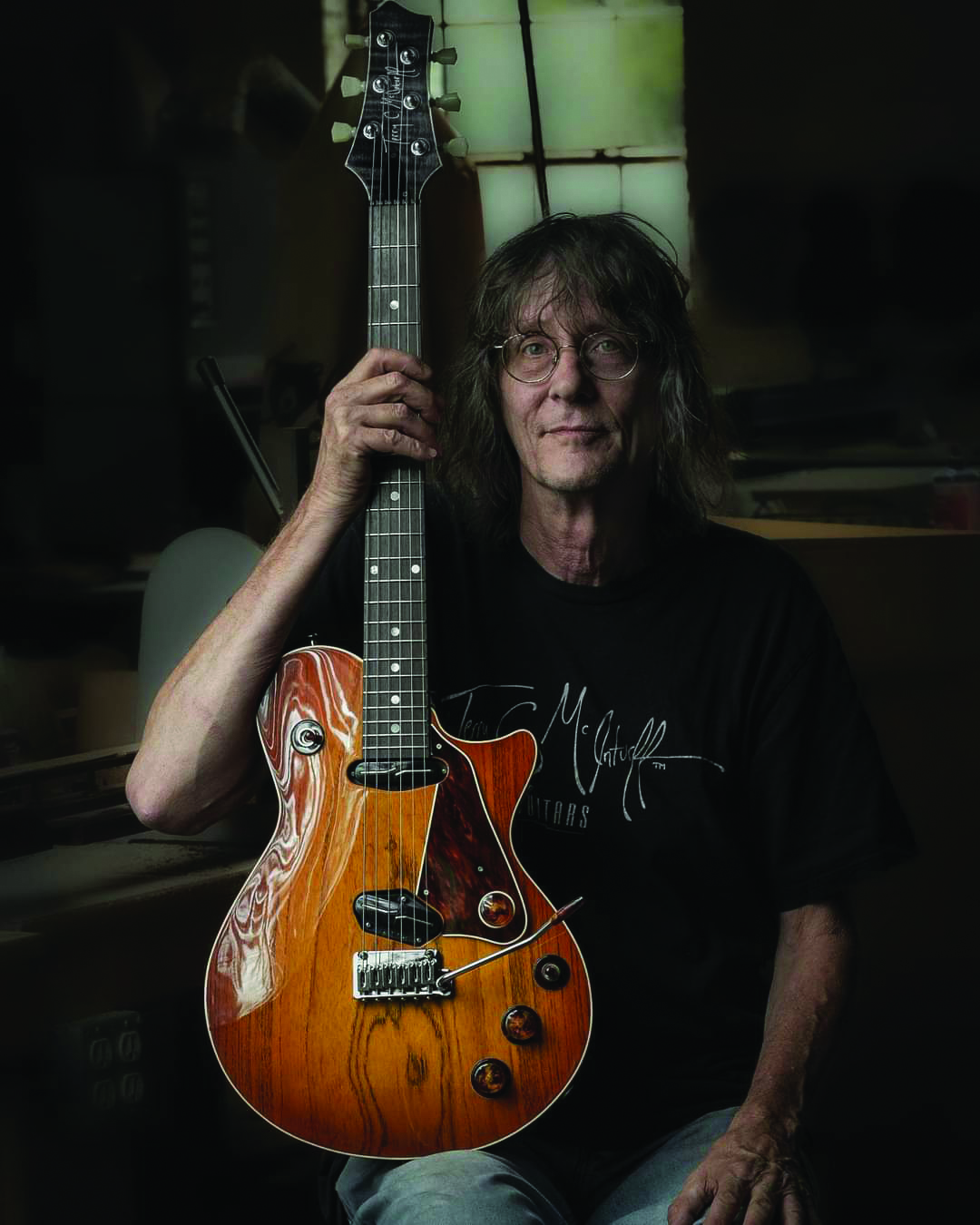
Regarding Leo Fender’s original design for the guitar that became the Telecaster, McInturff tells us, “They got it right almost immediately.
“The original design is, for the most part, as good as that design is going to get. As a builder, I did not address that sound for 25 years. It was a tad frustrating not having anything new to bring to it.
“But one day I realized I could explore the effect that the classic analog recording chain had upon the sound of the Tele on my favorite recordings, and build some of that character right into the chassis.
“That idea took years to bring to fruition in the form of my TCM Spellcaster model.”
I realized I could explore the effect that the classic analog recording chain had upon the sound of the Tele on my favorite recordings
Terry C. McInturff
Beyond the touch points that define the Spellcaster as an homage of sorts, the guitar shows innovation and originality that are well off the charts.
The body profile is adapted from one found on other TMC models. It shows an elegant modernizing of the lines and a racy forward lean that creates a subtly offset waist, along with the addition of ribcage and lap contours and a gentle arch to the top’s carve.
The swamp ash displays a stunningly bold grain beneath a vintage sunburst that’s shot in TCM’s proprietary blend of three nitrocellulose lacquer formulations to create a thin, Golden Era-like finish, with no catalyzers.
The neck is another proprietary TCM design. Carved from solid Honduran mahogany, it’s glued in with a mild dovetail joint. The profile is sweetly rounded to help the guitar sit well in the hand, yielding an extremely ergonomic and playable feel from nut to joint.
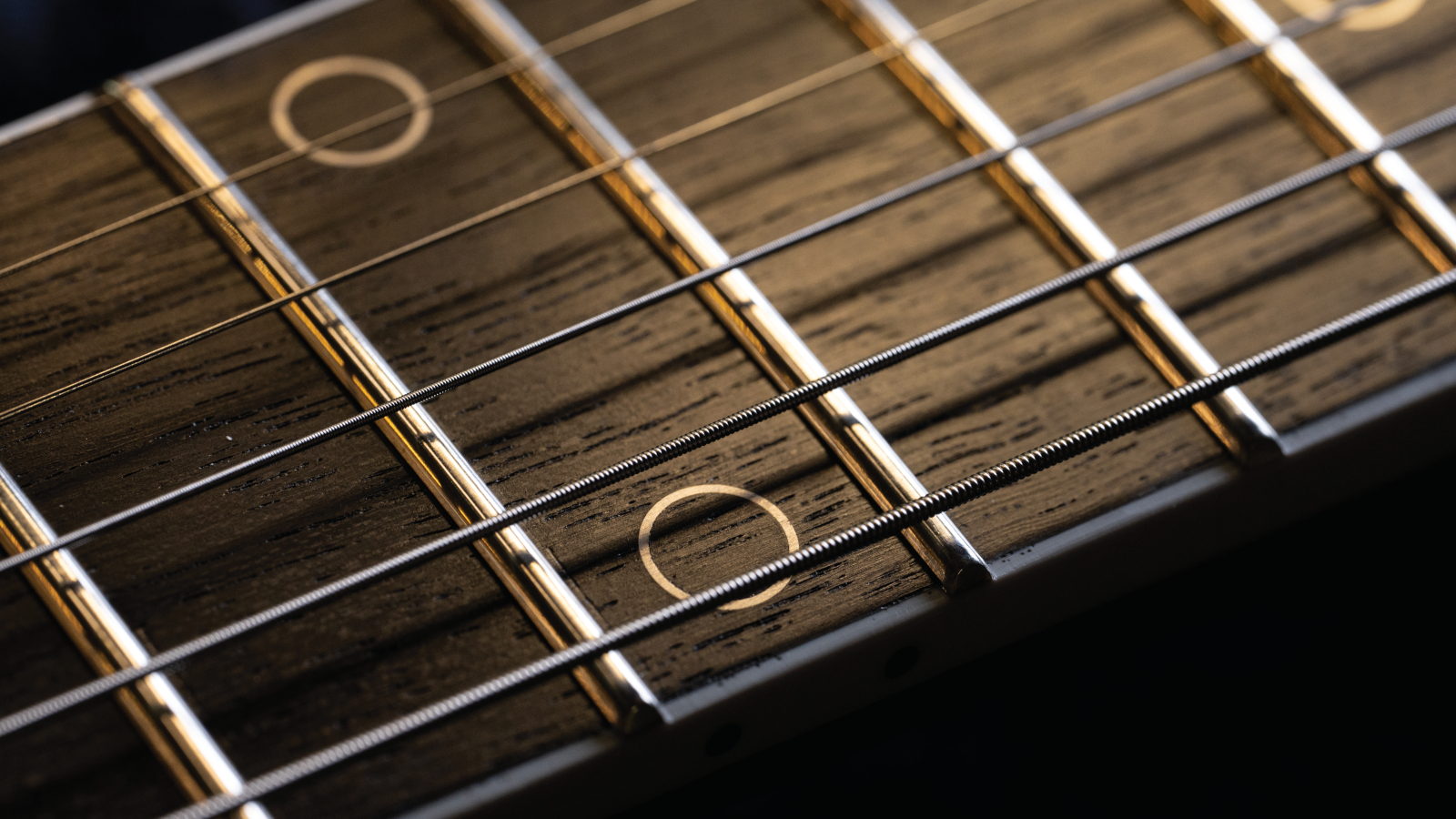
The fingerboard is bound torrefied Purple Heart (a.k.a. Royal Blackwood), inset with 22 medium-jumbo frets across a 25.125-inch scale length and adorned with sterling-silver “ghost ring” inlays.
“I’ve been building with this fingerboard wood as an option lately, and I really like the clear tap tone, stability and density,” McInturff tells me.
“The density falls between Brazilian rosewood and ebony. The stability, due in part to the roasting, is really quite good. Sustainable yield, too!”
Other relevant specs include the 12-inch fingerboard radius and a 1 1 1/16–inch width across the nut.
The latter, which TCM calls the Zebra Nut (patent applied for), is original and innovative. It’s made from a piece of extremely dense water buffalo bone that is inset with slippery black polymer inlays to form individual “saddles,” allowing two-thirds of the string’s bearing surface to be self-lubricating as it passes over both the bone and the polymer in each slot.

Tuners are Gotoh Magnum Lock Minis, and the bridge is a Gotoh 510 Series two-point vibrato.
In addition to the specs and hardware list, the Spellcaster’s dress and presentation really take it up several notches in the looks department.
The faux-tortoise knobs, switch tips and trem-arm tip are custom made to TCM’s specs, then hand sanded and buffed by McInturff and, in the case of the knobs, inlaid with a sterling-silver/blackwood indicator dot to echo those on the fingerboard. The tortoise pickguard – cleverly inset with the master-volume control – and the “poker chips” around the two switches are made in-house by McInturff, as is the bound ebony truss-rod cover.
Together with the multi-ply binding on the body’s top, the bound flame-maple headstock overlay (finished in translucent black, and hand signed), and the translucent vintage-cherry finish on the back and neck, it makes for plenty of custom-grade bling that’s never ostentatious or over the top.
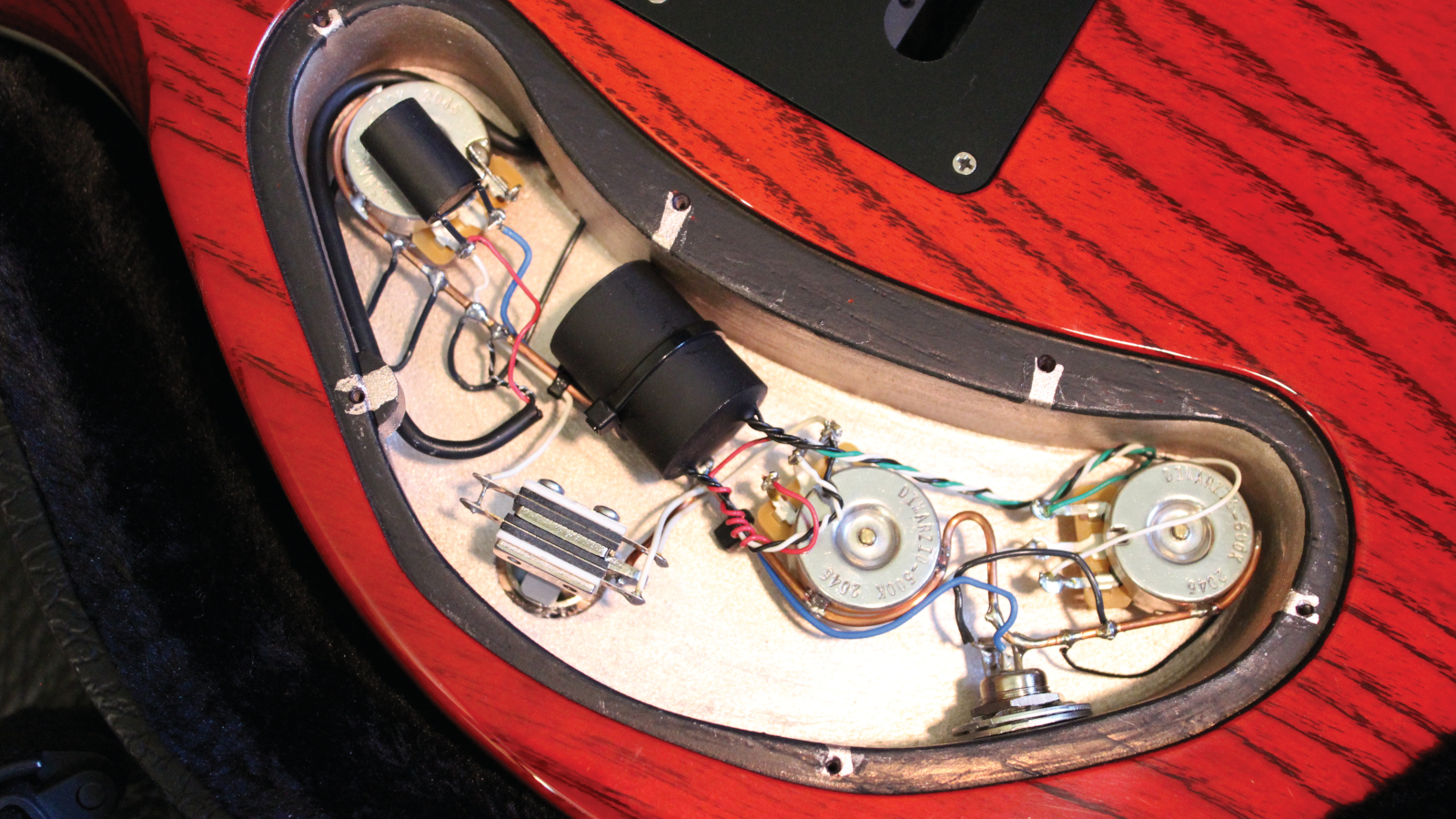
However, some of the most adventurous thinking went into the electronics. It’s the rare builder who gives as much thought to the entire signal path and the components that carry and enhance it as he does to the carving and crafting of the instrument they’re intended to transmit.
TCM’s holistic approach to guitar making is further revealed in this element of the Spellcaster, embodied in what he calls his Maxi-Q electronics.
It begins with a pair of Lindy Fralin Split-Blade T-style pickups, which add hum canceling to the vintage-wound tonal template. From there, a three-way selector switch on the upper bout feeds the single volume control and a pair of filter-style EQ controls.
It’s the rare builder who gives as much thought to the entire signal path and the components that carry and enhance it
The first (nearest the volume) is a low-pass filter (LPF), much like a traditional guitar tone control, but with a different voicing.
The second is a midrange-control filter (MCF) inspired by the input modules on a Raindirk Series 3 mixing desk previously in use at London’s Olympic Studios in the mid to late ’70s.
“I love the midrange EQ on those,” McInturff says. “At 10, you have full midrange boost, while at zero you have full midrange cut.”
A three-way switch near these lower controls routes the signal through either the LPF or the MCF, or bypasses both.
To top it off, the beauty of the execution is reflected in one of the most neatly and thoughtfully wired control cavities I’ve seen on any guitar.
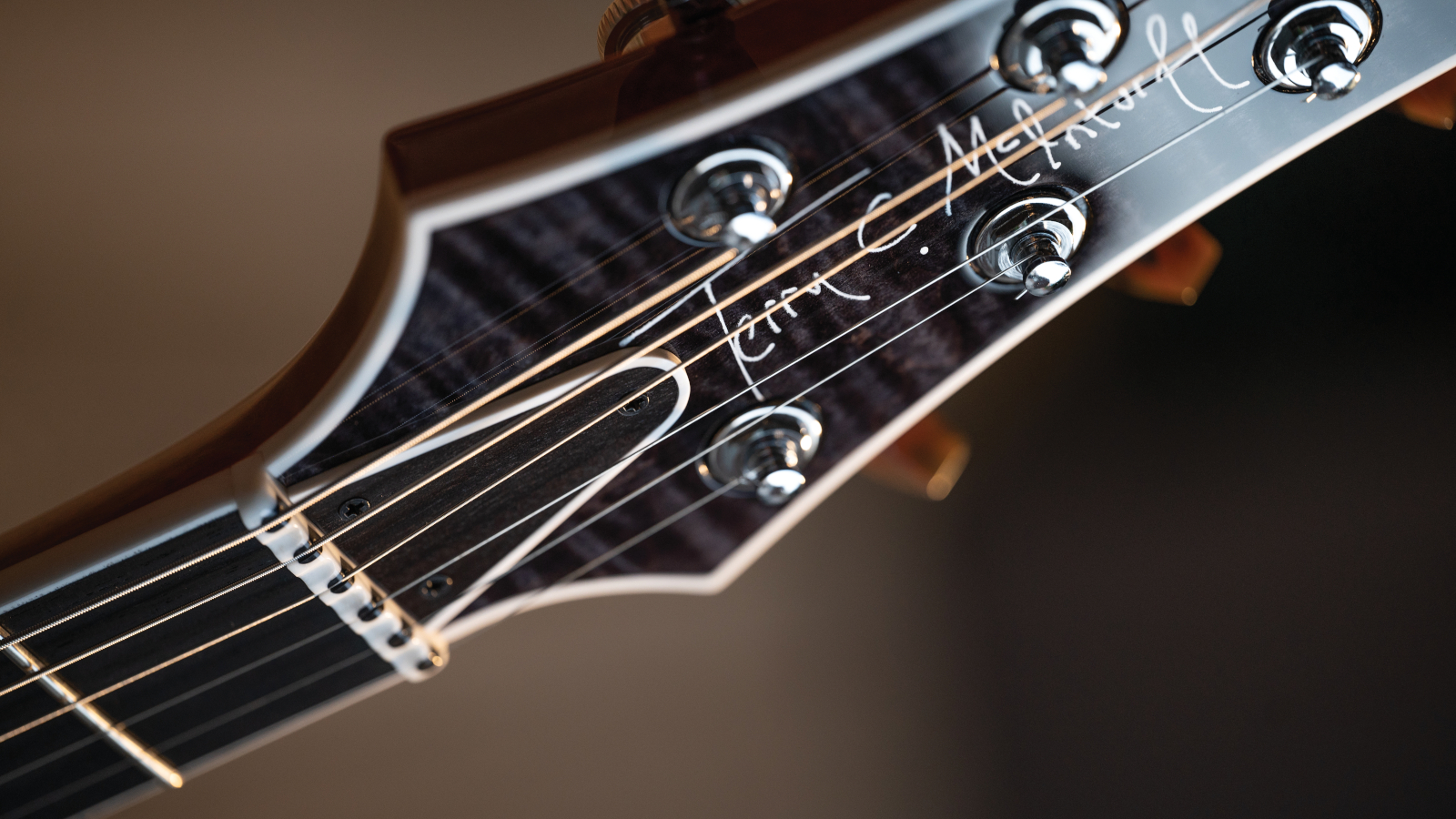
With the Spellcaster plugged into a 1968 Fender Super Reverb tube amp combo and a Friedman Dirty Shirley Mini head and 2x12 cab, its deceptively simple control setup enables a near-infinite variety of tones.
For example, with the three-way selector set to the bridge pickup alone, it’s easy to dial in a thick, yet clear humbucker-like sound on the LPF, a funky, Stratocaster-ish in-between tone on the MCF, and maintain a beefy Tele-inspired twang in the bypassed position.
Extrapolate that to the other pickup selections and the full sweep of each EQ knob, and the world’s your sonic shape-shifting oyster.
The guitar itself is extremely resonant, with a clarity and precision amid the shimmering, overtone-rich character
The guitar itself is extremely resonant, with a clarity and precision amid the shimmering, overtone-rich character, all of which speaks to the quality of the three-pronged effort – design, build and woods – that has gone into the thing.
It really shines via straight-in playing with the amp set clean-ish, or with just a little bite and breakup when you dig in hard, which is my go-to anyway.
It also takes to overdrive pedals like they’re second nature, the overall sonic solidity and hum-canceling single-coils all working in the Spellcaster’s favor when I stepped on a Wampler Tumnus Deluxe or a Tsakalis Six for some added dirt.
All in all, the Spellcaster is a masterfully rendered original design from one of today’s true artists of the electric guitar, and an impressively chameleon-like performer.
Well done, Terry C. McInturff, for weaving this tonally magic spell.
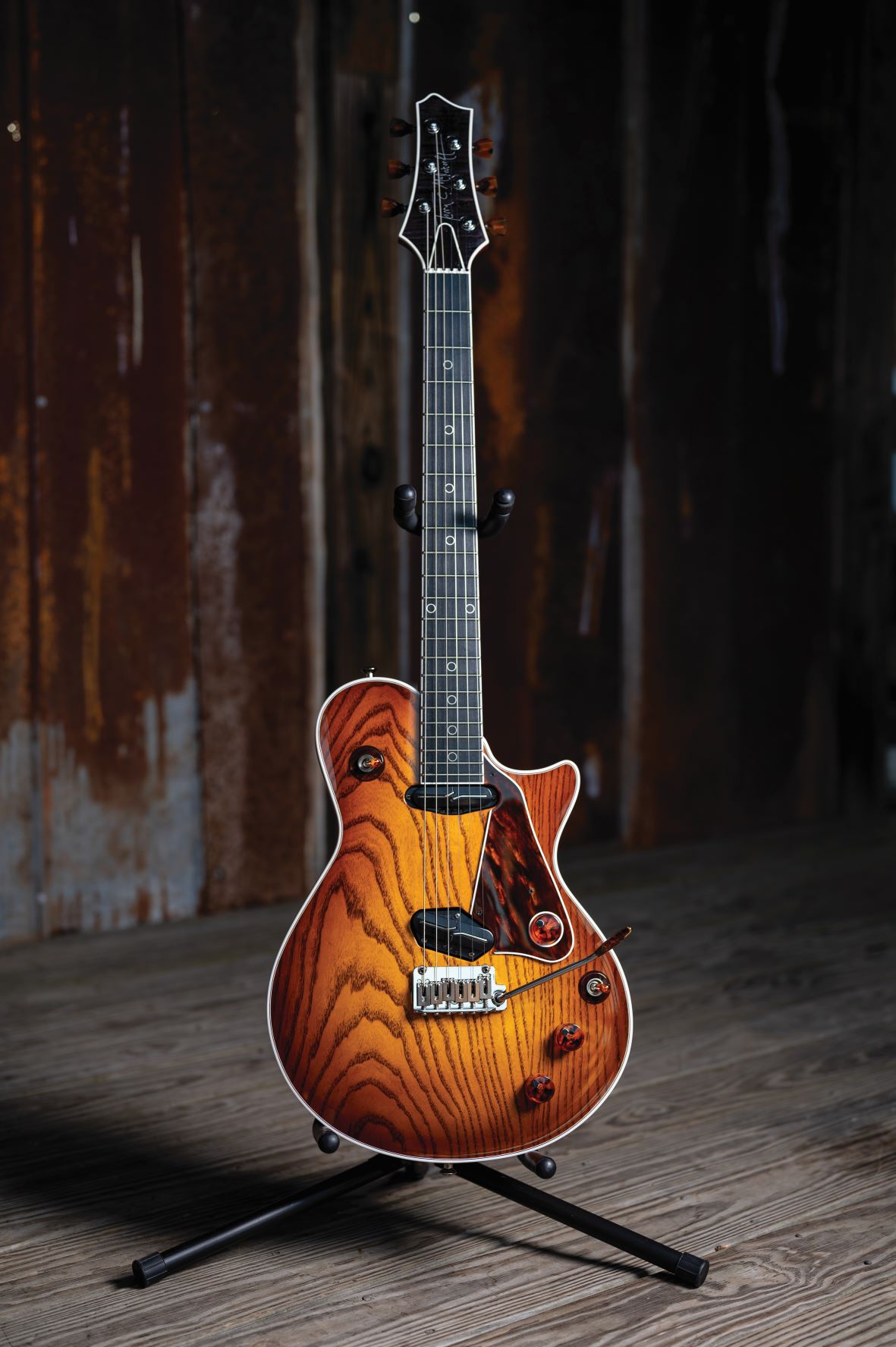
Visit McInturff Guitars for more information or email terrymcinturffguitars@gmail.com.
Dave Hunter is a writer and consulting editor for Guitar Player magazine. His prolific output as author includes Fender 75 Years, The Guitar Amp Handbook, The British Amp Invasion, Ultimate Star Guitars, Guitar Effects Pedals, The Guitar Pickup Handbook, The Fender Telecaster and several other titles. Hunter is a former editor of The Guitar Magazine (UK), and a contributor to Vintage Guitar, Premier Guitar, The Connoisseur and other publications. A contributing essayist to the United States Library of Congress National Recording Preservation Board’s Permanent Archive, he lives in Kittery, ME, with his wife and their two children and fronts the bands A Different Engine and The Stereo Field.

